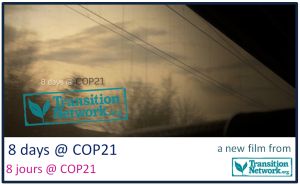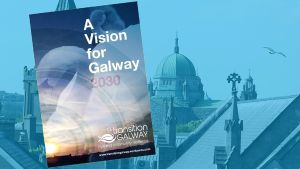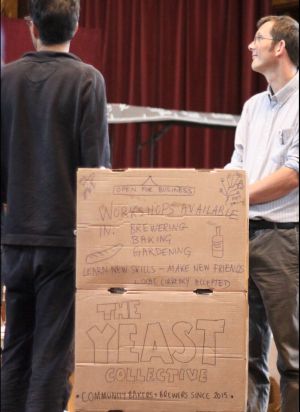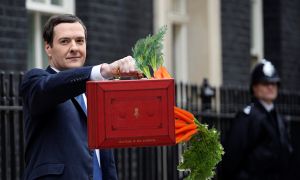Archive for “Originally posted on Transition Network” category
Showing results 36 - 40 of 383 for the category: Originally posted on Transition Network.
30 Mar 2016
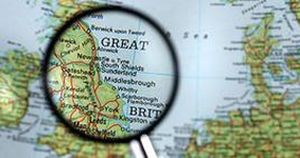
The word ‘devolution’ figures large in the UK at the moment. You’d think the idea of devolving power closer to the local level would be very akin to what Transition is working to achieve, but as
Kerry-Anne Mendoza puts it, in reality it represents “the greatest shift of power from local to central government since the days of Thatcher”. Professor Bob Hudson is a public policy specialist at Durham University. I was recently so impressed by an article he wrote for the London School of Economics website called
The Four Defecits of the English Devolution Process that I tracked him down and interviewed him a few days later. You can hear (or download) our conversation in full here, or read the lightly-edited transcript below:
Read more»
29 Mar 2016
We are delighted to present our new film, ‘8 days @ COP21’. It captures those days last December when the climate negotiations took place in Paris, and the experiences of some of the Transitioners who were there. Thanks to our wonderful team of crack Transition volunteer translators in Paris, we are able to offer the film with both English and French subtitles (just click ‘Settings’, then ‘Subtitles/CC’ and then choose your language). We really hope you love it.
Nous sommes ravis de vous présenter notre nouveau film ‘8 jours @ COP21’. Il saisit ces jours de décembre dernier pendant lesquels les négociations climatiques ont eu lieu à Paris, et les expériences de certains des Transitionneurs qui étaient présents. Grâce à notre équipe de choc de traducteurs bénévoles du groupe de Transitionneurs parisiens, nous avons la possibilité de vous proposer le film avec les sous-titres à la fois en anglais et en français (pour cela, il vous suffit de cliquer sur “Settings”, puis “subtitles/CC” et ensuite vous pouvez choisir la langue que vous souhaitez). Nous espérons sincèrement que vous allez l’apprécier.
 ‘8 days @ COP21’ is the work of filmmaker Emilio Mula (see right, travelling to Paris with Rob Hopkins), who has invested huge amounts of time into making this beautiful film. We would like to use this film to try a new way of being able to resource filmmakers like Emilio to make future wonderful films about Transition. So we would like to invite you to make a donation once you’ve seen it, to give what you felt the film was worth to you.
‘8 days @ COP21’ is the work of filmmaker Emilio Mula (see right, travelling to Paris with Rob Hopkins), who has invested huge amounts of time into making this beautiful film. We would like to use this film to try a new way of being able to resource filmmakers like Emilio to make future wonderful films about Transition. So we would like to invite you to make a donation once you’ve seen it, to give what you felt the film was worth to you.
Please use the ‘Donate’ button below, and our thanks in advance for helping to make this film happen!
‘8 jours @ COP21’ est le travail du réalisateur Emilio Mula (à droite sur la photo, en voyage à Paris avec Rob Hopkins), qui a consacré énormément de temps à faire ce beau film. Nous souhaitons utiliser ce film pour tester une nouvelle manière de permettre à des réalisateurs comme Emilio de continuer à faire de merveilleux films sur la Transition. Donc nous voudrions vous inviter à faire un don après l’avoir vu : donnez ce que vous pensez qu’il vaut pour vous.
Vous pouvez utiliser le bouton “Donate” ci-dessous, avec nos remerciements par avance de votre aide pour rendre ce film possible!

Enjoy the film, please share on social media, and tell us what you think…
Read more»
24 Mar 2016
Transition Galway in Ireland just published ‘A Vision for Galway 2030’, their Energy Descent Action Plan (EDAP). It’s a fascinating piece of work, and so we caught up with Bernard McGlinchy (BM), Mary Greene (MG) and Caoimhín Ó Maolallaigh (COM) to find out more about it. There had been two previous attempts to start Transition Galway, both of which had petered out, but when Mary Greene moved back to Galway after time away in London studying Transition groups there for her MSc, she sought out, via the Transition Ireland & Northern Ireland website, Caoimhín and Bernard, and the group got going in earnest. They started film screenings and meetings, running street stalls to raise awareness, taken part in the St Patricks Day Parade, began Green Drinks evenings and a community garden. It wasn’t long before the idea of creating an EDAP took hold of their imagination. You can find the full document here, and our interview in full appears in this podcast:
In 2013 and 2014, Transition Galway organised to a series of open, public visioning events to allow people share their ideas for a low-carbon, sustainable Galway City by the year 2030. Members of Transition Galway then compiled all of the ideas, big and small, received from the public at these sessions into one final document. The booklet is divided into eight chapters based on eight topics:
- energy
- food and water
- infrastructure
- community and education
- arts and culture
- economics
- waste;
- inner transition
They produced eight short films, one for each topic, outlining the solutions in each chapter. A selection of those videos are spread through what follows. The first video though is a piece from Irish TV about the report’s launch event:
The report
I started by asking the three of them about the design of ‘A Vision for Galway 2030’:
COM: It’s broken into digestible solutions. Bernard came up with the solution for that.
BM: We took the format from the Totnes EDAP and thought “how can we simplify that so that we could do it on a slightly smaller scale?”
COM: There’s over 200 solutions and they’re little names or ideas in themselves. Bernard came up with the idea that there’s a title for the solution, who it applies to so it might apply to the council or the department of education or the private sector etc. Then the main text is about the actual solution itself, a description and so on, and then there are links underneath that. One of the reasons it’s successful is that format.

Other groups could copy that of course – nobody owns that idea. It’s just easier to read, you can dip out, you can skim, and the links are there as well. So the formatting of it is one of the more successful things about it. There aren’t many new ideas out there, but I think the formatting is more digestible, it’s easy to read, and it also lends itself to the videos as well and the website.
MG: We were worried about just having everything in written form because a lot of people prefer visual communication on YouTube etc. We were lucky enough to have a guy here involved who has all the equipment and was willing to give all that time. So we decided to do a short video summarising each chapter to get the message further as well. So the host that wrote the chapter agreed to present it if they could and if not we found other people to do it – just to summarise in really short terms what they talked about in the chapter. That helped a lot to increase publicity.
The response
COM: Obviously with the climate change talks in Paris at the end of November to the start of December (2015), with the march as well – we helped to organise the climate march in Galway – we decided to launch it then for that reason. Also locally the city is putting together a city development plan, which we will make submissions to. The closing date for that is March so we will have to come together and decide whether to submit the whole thing or to be selective. So that’s the next step I suppose, to decide what submissions we make into the city development plan. They get voted in by all the councillors, so we have to lobby them and support that.
The other thing is there is a general election. We’ve always given all of our material and invited all the local politicians, but I’m not sure if that’s up for grabs. That’s national election in Ireland, the general election.
The City Development Plan was probably the highest potential in terms of us affecting change in Galway because it will be the City Development Plan for the next five years, from 2017 onwards. The other thing is that Galway is a candidate city for the European City of Culture 2020 so we’ve been working closely with them as well and have given them the document.
They’re making a final bid as well. We’ve tried to engage with all the different groups. In terms of timing it’s really good. The City Development Plan is coming together, it was after the Paris talks and the general election as well. So it’s too early to say – we didn’t get great coverage from the local media. One paper covered it but the two main ones didn’t.
MG: Connemara Radio interviewed us and there’s an article in the Irish Times about us. I was looking at the stats in terms of the web traffic and so on, and it just spiked after that article as it was a national publication.
BM: The 2020 European City of Culture thing – I managed to get talking to a group that are interested in setting up a social space for Galway, for art, design, mental health, growing food sustainably all in one centre, so that was their plan. They were looking at all the groups, so I was representing Transition Galway. I put in a bit like the Garden Facilitator role in the document, how can I expand that a little bit and how would that fit into facilitating people within this kind of space.
I’ve also gone to college studying Business Enterprise and Community Development, which helped to expand it further. We’re also going to meet people in the business sector and health, so it’s merging community and business and trying to work out how that works. That will probably be more towards the group that are doing it than specifically Transition, but it’s the Transition idea of a garden facilitator that sparked it, and I think there’s something starting to evolve from that.
MG: So we have the political field, the business field, and then also the University have been very supportive. I’m doing a PHD in the Geography Department and they’ve invited me to come in to do guest lectures about Transition Towns to the Masters class there that are doing a Masters in Environment, Society and Development and they’re really open to engaging with Transition and are hoping to get some kind of potential research projects with Transition down the line as well. All the MA students are looking for projects to do as well, so there’s a lot of engagement there which is a great support.
Altogether I would say Galway is very open and supportive but that’s different to actually getting these ideas implemented. So the City Development Plan is the best way for that. We also had a launch and Irish TV, it’s a new localised TV channel, they cover local, grassroots stuff in Ireland. They did coverage of us as well, and we had the TV coverage of that online as well. So there has been quite a lot of support but it is too early to say yet where the ideas are going to be implemented, if at all.
Next steps
COM: We haven’t really had a proper meeting since the publication, we’re all busy with different things. We all needed a little rest.
MG: We’re going to have a meeting in early February to discuss what the next steps are and our plan from here with the group and so took a bit of a hiatus over Christmas. But we’re going to get back into it and it will be up on the website, so watch this space.
COM: There’s actually a few other things – Bernard alluded to a social space group. There’s another group as well trying to set up co-ops and there’s a lot of overlap with these different groups, and common people who are involved with these different groups. Another one of our members who is away at the moment, he’s talking about setting up a local energy co-op and there’s another person talking about housing co-ops. So I think it might seed different groups and so on. We’ll keep putting the seeds out there and hopefully the seeds will land on fertile soil. Realising those things, that’s the hard work really.
BM: One of the things I would like to get involved with personally is the schools and hospitals, to make the public buildings adopt a more Transitional ethos. It’s just finding ways in.
MG: It’s going through the institutions, then there’s groups of people who are going outside the institutions and just trying to do it themselves. So there are two lines of change going on.
COM: There’s over 200 individual ideas. We’re a small group so we can’t implement all of them. We put them out there and obviously anybody could take those ideas. People can borrow them or adopt them and adapt them to their own locality and so on. They’re just ideas.
MG: It would be great to have a timeline to add to the book eventually, but that would require work with the City Development Plan to actually see when different bits of projects could be implemented and to maybe have a timeline that we’re updating as we go along of things that are being achieved, so we could maybe add that to the handbook down the line.
COM: It could be reviewed it a few years – you were talking about adding a new chapter…
BM: When we were looking at the Inner Transition it was almost overlapping with health initially. I’m a trained nurse myself, but that wasn’t what I was focusing on. I realised there’s so many things in the healthcare sector that at that period I didn’t have the knowledge of. So instead of sandwiching it along with Inner Transition, we just mentioned some of the possible ideas at the start and said – hey look, there’s room for this to expand further if we look more closely at the healthcare system. That would be one gap. But it was never meant to be a fully comprehensive and complete document. It was as much as we could possibly do.
MG: We hope that maybe we could add more chapters and perhaps a timeline of what’s been achieved and update that via either our website or a new edition of the handbook.
COM: If new ideas come in we could just add to it because there’s no limit to what we could do.
If Galway does win the City of Culture bid there will be funding and some of these ideas need funding or large funding so we’ll see. National legislation as well, with the Paris climate talks and so on, there might be momentum there and potential for implementing some of the ideas. We’ll just have to collaborate with whoever we can really.
Read more»
21 Mar 2016
My friend Lucy Neal sent me a photo of me the other day, taken at the Transition Network conference in 2012 at Battersea Arts Centre. On the final day of the event, we did a remarkable exercise, the Transition Town Anywhere High Street, designed and facilitated by Ruth Ben-Tovim of Encounters Arts. Over the space of a morning, we built, from scratch, using just our hands, our imaginations, the relationships and common interests we had forged with those around us, as well as lots of cardboard and sticky tape, a High Street. It was a High Street of shops, businesses, health services, open spaces, all with its own internal logic and instinctive circular economy. It was one of the most remarkable and magical things I have ever been part of. Here’s that photo (see right).
I had come together with others interested in creating a business on our High Street which was built around yeast. It was called ‘The Yeast Collective’. In the photo, the sign for our business reads “The Yeast Collective: community bakers and brewers since 2015” (the exercise was set sometime in the future). It continued, “workshops available in brewing, baking, gardening. Learn new skills, make new friends. Local currency accepted”, as well as, to one side “hop growing”.
Our beer offerings included ‘Bilbery Brew’ (5%), ‘Elderflower Ale (3.5%), ‘Anywhere Ale’ (4.5%) and ‘Peak Ale’ (0%). At that time, I had an idea that I wanted to be part of starting a brewery in Totnes, but it was just a dream. This activity turned that dream into a vision. What’s the difference?
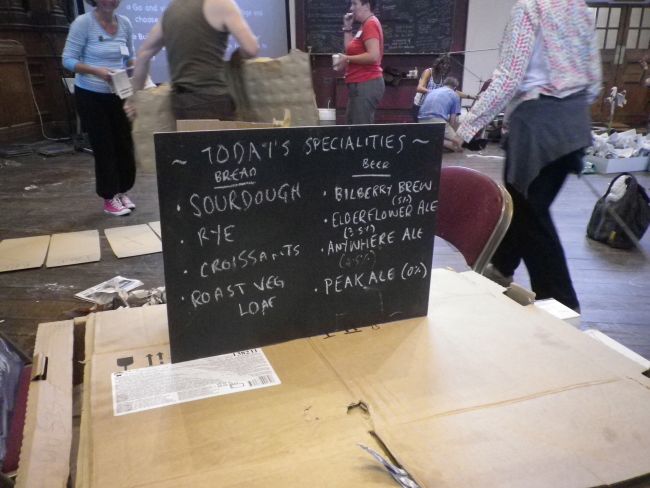
A dream is a fantasy, an aspiration that has yet to touch the ground. We have them all the time. A vision has power to it. Ari Weinsweig, writing at Inc.com, writes:
“What is a vision? It’s not as mystical or out there as it sounds. A vision, quite simply, is a picture of what success will be at a particular time in the future”. He continues, “A great vision is inspiring. It gets you and everyone in the organization excited to come to work; it’s the cathedral everyone is coming to work every day to construct. This is not mere wishful thinking. A vision must also be strategically sound. You have to have a reasonable shot at getting there”.
As Theodore Hesburgh put it, “it’s got to be a vision you articulate clearly and forcefully on every occasion. You can’t blow an uncertain trumpet”. But as well as just being “a picture of what success will be at a particular time in the future”, a vision for me is something you feel. It fills your mind’s eye, it’s something you can see, taste, touch, even though it doesn’t exist yet. Creating, with others, our Yeast Collective, and standing in it, imagining the beer in the fermenters, the bread rising, customers calling in, and the conversations we had, my dream took a huge step forward. I was going to do this. It felt fantastic. How empty would my life feel if I didn’t make it happen?
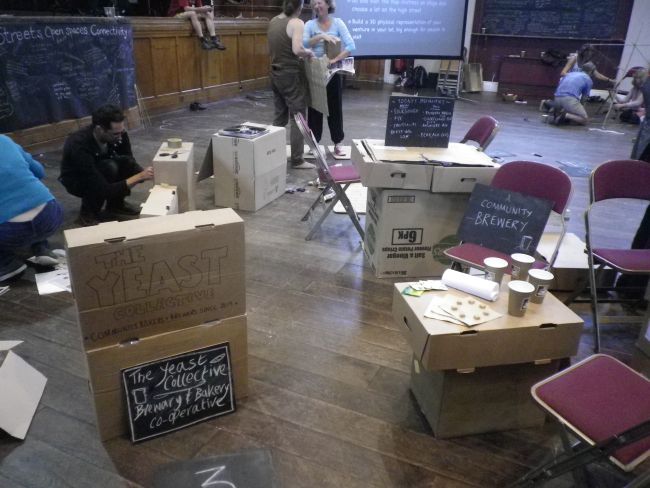
Fast forward 4 years, and I can take you to see The Yeast Collective, or at least a version of it. New Lion Brewery has now been running for 3 years thanks to the fantastic team of people who came together to make it happen. We make awesome beer, employ 3 people, and are rooted in the economy of my town. While we don’t also bake bread, we are very good friends with the best bakers I’ve ever experienced, who are just up the road and who use our Totnes Stout in one of their breads. We accept local currency. We run courses on how to brew your own beer. And yes, we also grow hops, through our recently-launched Hop Club!
I was reminded of this when I recently watched the brilliant new documentary, ‘Blood, Sweat & Beer’. It tells the story of the explosion of craft beer in the US, where there are now 3,400 breweries, of which 99% are craft breweries, a rapidly growing sector that has reimagined beer while also catalysing many new small independent businesses. The film follows several stories of people starting new breweries. One tells of Asa and Matt, two young men in their early 20s, who start The Brew Gentlemen Beer Company in Braddock, PA, along with their brewer Brandon.
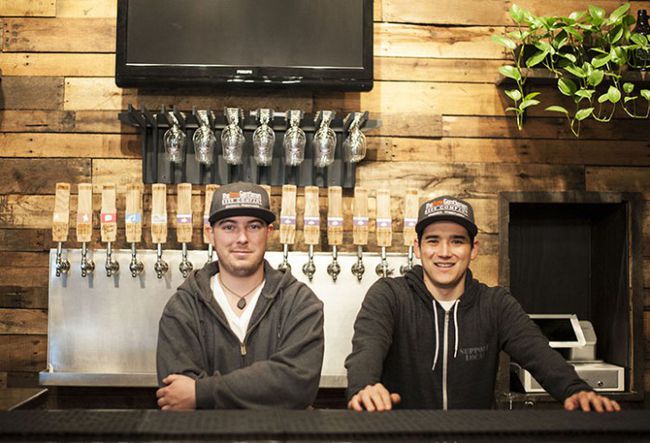
Braddock was a steel town, close to Pennsylvania, hit firstly by the closure of its steel mills and secondly by the epidemic of crack cocaine in the 80s and 90s. Its population fell from 20,000 to 2,000, and reached a stage where even the liquor stores were closing. In this most unpromising of settings, Matt and Asa decide to open a craft brewery, and spend 3 years renovating an old building on the Main Street to turn it into a brewery. It’s an eventful journey, a story told in the film.
At the film’s close, we join them at their Grand Opening. There are many tears among the beers, many proud and emotional relatives, and Asa says:
“it’s what we’ve done every day since we graduated college. This is all we wanted to do … and it’s finally happened”.
You don’t get to those moments without a vision. A dream isn’t enough. You don’t have to build a cardboard High Street (although it helps) … but give yourself the space to imagine it, pick a fixed point in the future, and give yourself permission to vision something fabulous. You never know where you’ll find yourself standing in a few years.
Read more»
16 Mar 2016
So George Osborne just delivered his budget. In the same week, the Mauna Loa Observatory released data showing that the rise in CO2 concentrations in 2015 was the largest year-to-year increase during 56 years of research, up to 405.6 ppm, a level not seen in 15 million years. Prof. Michael Mann says “we have no carbon budget left for the 1.5⁰C target, and the opportunity for holding to 2⁰C is rapidly fading unless the world starts cutting emissions hard right now”. Yet, in spite of being a signatory to COP21, such thinking barely figures in Osborne’s Budget, with its foundations in the increasingly shaky argument that a financial crisis necessitates devastating austerity. It includes, for examples, more tax breaks for the oil and gas industry. Yet it strikes me that what we are really seeing, in the Budget and more widely, is a crisis of the imagination. And that’s far more dangerous. Allow me to make my case by showing you two maps.
Map One
The first is taken from the Heart of the South West Local Enterprise Partnership’s ‘Prospectus for Prosperity’ document. Here it is:
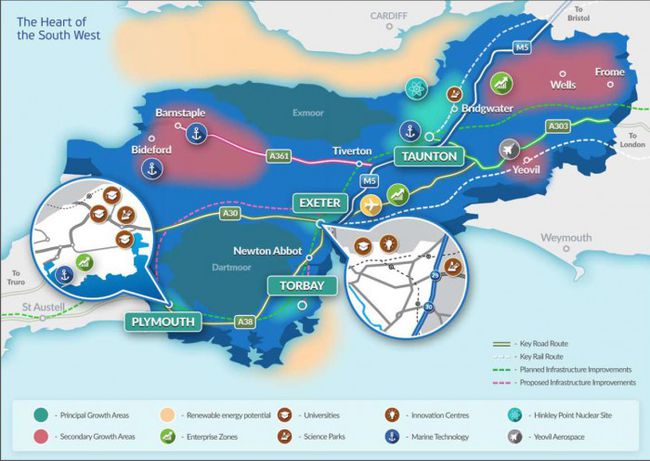
Look closely. It is a plan, created by an unelected, self-appointing business elite (the ‘Local Enterprise Partnership’ (LEP)), through whom billions of pounds of government funding will be channelled to promote growth in the south west of England, for how the region should develop over the next 10 years. LEPs were set up by the Conservative government to replace Regional Development Agencies, and are a response to the government’s thinking that increasing productivity is “the challenge of our time”. They argue that we need to set about:
“‘fixing the foundations’ of infrastructure, skills, and science through a devolution revolution delivering long-term public and private investment”.
In this map, the area’s “renewable energy potential”, well that’s all in the sea. It is barely able to contain its delight about the ‘Golden Opportunity’ of Hinkley C nuclear power station which it thinks will create 25,000 jobs, but which actually looks less likely to happen with every day that passes, the Financial Times recently writing that “the case for halting Hinkley is becoming hard to refute”.
The Prospectus allocates ‘Principal’ and ‘Secondary Growth Areas’ based on the wishes of business, not of local people, who haven’t been consulted at all. The LEP Prospectus states that they will deliver 179,000 new houses, but the words “affordable”, “low carbon”, “community land trusts” or “local needs” appear nowhere. Of the 800 new houses recently built, or being built, around Totnes, for example, just one went to someone currently on the housing list. This is social cleansing disguised as ‘economic growth’, ‘job creation’ and ‘removal of red tape’.
“We cannot deliver effective economic interventions without a strong business voice”, they boast. Ah, but whose voice? The LEP map, which embodies in one mad, deluded image all that is wrong about the government’s approach, is all about supporting the agenda of big business in a part of the country where about 80% of economic activity is generated by small to medium-sized enterprises.
Map Two
This one was created at a REconomy event last year in Penzance that brought together social enterprises, development organisations, entrepreneurs and others to imagine a new economy for the region.
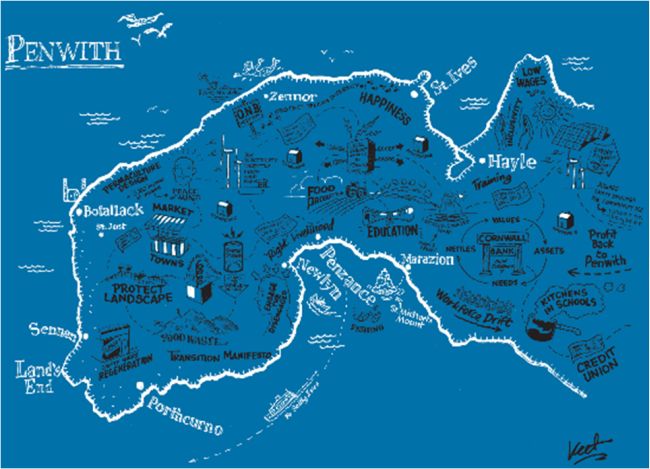
Sadly it’s not for the same part of the country (would have been nice to be able to compare the two), but you get the idea, and they are neighbours. For the creation of this map, imagination was unleashed. Creativity was invited. Business-as-usual was put to one side. The solutions suggested were those that were rooted in place, in local economies, based on the idea that a stronger economy is one that is better connected, one that maximises beneficial relationships and interconnections. As a result, the solutions in the map are vibrant, possible, inspiring, intriguing and, in some cases, already underway.
Power to the Imagination
If we are truly to shift our economy to one where we have any chance of cutting carbon in the way required, we need to creatively question basic assumptions, the redefine what we mean by ‘progress’. Do we really need to invest in new roads and tunnels when all they do is create more traffic? Is pouring billions into new railways and tunnels with the vast associated carbon emission really sensible, just because that’s what we’ve always done?
How about a vast reforestation programme in order to build flood resilience into landscapes recently trashed by floods? How about investing the billions currently being put into carbon-intensive infrastructure into improving our housing stock, among the worst in Europe? Into stimulating community renewables? New regional banks? Seeing the push for zero carbon housing as a huge opportunity for innovation and new businesses in the same way that we are meant to see nuclear power. Or seeing conserving energy in creative ways (‘negawatts’) as being a greater source for stimulating new business than building new energy generation infrastructure?
THAT is the direction where the creativity, the problem-solving, needed to solve the actual “challenge of our time”, climate change, will come from. Indeed, it’s already happening, as the Penzance event, and many others, and the work of countless groups, businesses and individuals, the success of the film ‘Demain‘, the explosion of new food businesses, urban farms, and so on show. Build on that. Invite ideas. Be bold, dream big.
This Budget introduced a Sugar Tax, which is great. But part of that will be spent to fund “longer school days”. Talk about adding insult to pop-loving schoolkids’ injury. Imagine what else that could have been spent on, and already you’re on the right track.
A budget to stimulate the imagination, now wouldn’t that be a thing?
Read more»
 The word ‘devolution’ figures large in the UK at the moment. You’d think the idea of devolving power closer to the local level would be very akin to what Transition is working to achieve, but as Kerry-Anne Mendoza puts it, in reality it represents “the greatest shift of power from local to central government since the days of Thatcher”. Professor Bob Hudson is a public policy specialist at Durham University. I was recently so impressed by an article he wrote for the London School of Economics website called The Four Defecits of the English Devolution Process that I tracked him down and interviewed him a few days later. You can hear (or download) our conversation in full here, or read the lightly-edited transcript below:
The word ‘devolution’ figures large in the UK at the moment. You’d think the idea of devolving power closer to the local level would be very akin to what Transition is working to achieve, but as Kerry-Anne Mendoza puts it, in reality it represents “the greatest shift of power from local to central government since the days of Thatcher”. Professor Bob Hudson is a public policy specialist at Durham University. I was recently so impressed by an article he wrote for the London School of Economics website called The Four Defecits of the English Devolution Process that I tracked him down and interviewed him a few days later. You can hear (or download) our conversation in full here, or read the lightly-edited transcript below: